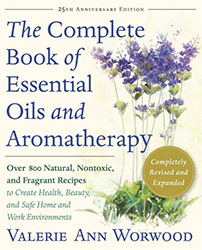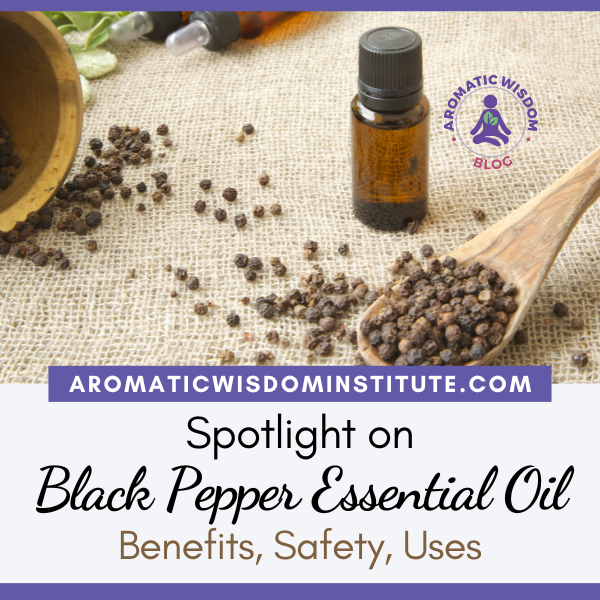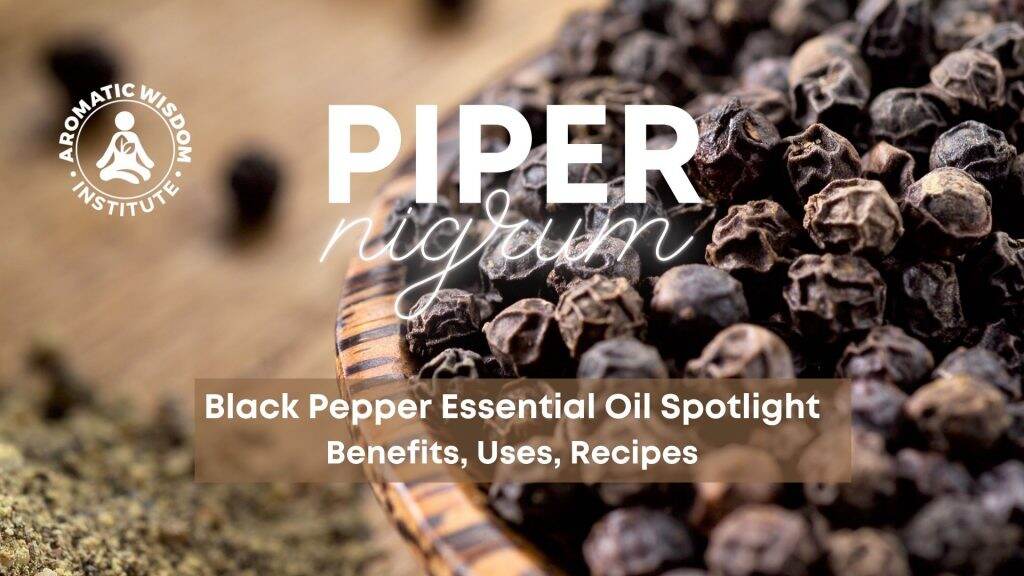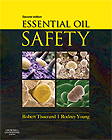As both the Northern and Southern Hemispheres slip into their new seasons of Fall and Spring respectively, people begin to increase their physical activity. Whether you are suddenly raking piles of leaves, riding your bike, or hitting the gym, vigorous exercise and movement can leave you aching. If you want pain relief for sore muscles and aching joints, Black Pepper essential oil is just what you need!
This blog post may contain affiliate links which means I may receive a small commission if you make a purchase using them. The commission is paid by the retailer at no extra cost to you.
My Personal Relationship with Black Pepper
As a long-time massage therapist and mother of athletes, Black Pepper essential oil has been an important part of my world. I’ve used it in massage blends for clients with pain and inflammation, a sciatic flare-up, or poor circulation. I always work it into warming salves to soothe the overworked muscles of my husband and myself after a strenuous day.
The Foundations
Latin Name: Piper nigrum
Botanical Family: Piperaceae
Note: Middle
Extraction Method and Plant Part: Steam Distillation of the unripe, dried peppercorns
Essential Oil Aroma: Hot, spicy, warm, and masculine.
Essential Oil Color: The essential oil of Black Pepper is totally colorless.
Chemical Profile for Black Pepper Essential Oil
Ketones (4%), Sesquiterpenes (30%), Monoterpenes (60%).
Black Pepper essential oil has a high Monoterpene content with the primary components being pinene, carene and limonene. This oil is also high in the pain-reducing sesquiterpene component called beta-caryophyllene.
Listen: Essential Oil Chemical Families, A Beginners Guide
Therapeutic Properties of Black Pepper Essential Oil
Helpful Reading: Glossary of the 40 Most Common Essential Oil Properties
- Antiseptic – assists in fighting germs/infections
- Antiemetic – reduces incidence and severity of nausea, vomiting
- Anti-inflammatory – alleviates inflammation (rubefacient)
- Expectorant – releases excess nasal/bronchial congestion
- Febrifuge – reduces fever
- Rubifacient – increases local blood circulation, causes minor skin irritation, vasodilation, and local analgesic effect
- Warming
- Digestive stimulation
5 Suggested Uses for Black Pepper Essential Oil
- Topical use of Black Pepper essential oil can feel warm and comforting to an aching body. However, make sure you dilute it in a carrier such as Jojoba oil (which is really a wax) or sweet almond oil to avoid irritation or sensitization to the skin. Once diluted it’s safe to use on the skin and wonderful in massage oil. Try using it in a warm compress for specific areas of pain and inflammation.
- Black Pepper oil is great for the cold and flu season. Try adding a drop of jojoba for a chest rub or foot massage oil to warm up the body and stimulate circulation and the immune system. Due to its analgesic and warming qualities, Black Pepper essential oil is great in sports massage oils for sore muscles, pain, and stiffness.
- Add it to a nasal inhaler or put a drop or two on a tissue to inhale its spicy aroma to help reduce nausea.
- Black Pepper is a great anti-inflammatory and can help increase circulation in an area that is cold and stiff, especially first thing in the morning. Avoid if an area is hot from inflammation.
- Add Black Pepper essential oil to a rich unscented cream and massage into the belly for constipation, and gas, as well as to support digestion. Use at a 1% dilution (5-6 drops per one ounce of carrier).
Listen: Blending Guidelines for Making Aromatherapy Products
Black Pepper Blends Well Aromatically with these Essential Oils
Citrus oils, Conifer Oils, Herbal Oils like Tea Tree, Marjoram, Thyme, and Peppermint
Black Pepper Recipe
Sciatic Pain Relief Blend
Ingredients:
- 4 drops of Black Pepper Essential Oil (Piper nigrum)
- 3 drops of Spike Lavender Essential Oil (Lavandula latifolia)
- 3 drops of Clove Bud Essential Oil
- 3 drops of Ginger Essential Oil
- 2 drops of German Chamomile Essential Oil
- 1 fl oz/30 mL of Trauma Oil
- 1 fl oz/30 ml PET plastic flip-top bottle
Directions:
- Add the essential oils to the flip-top bottle
- Add the Trauma oil
- Close the cap and shake gently to completely blend the essential oils into the Trauma oil
- Massage into the side affected by sciatica including the lower back, buttock, and down the leg.
- Apply to the affected area as needed.
Safety: I recommend a small patch test to ensure there is no skin sensitivity and avoid using on broken skin when using Trauma Oil. Can be used on children over the age of 10.
Listen for More Sciatic Pain Support with Essential Oils: Essential Oils for Sciatic Pain, 3 Methods of Use and a DIY Massage Recipe
Subtle Properties (vibrational and energetic)
Black Pepper has, for years, been one of the first essential oils I reach for when I need either motivation or courage. It can also be a great oil to use when you need protection.
Essential Oil Diffuser Blend for Courage During Transition
- 1 drop of Black Pepper
- 1 drop of Ginger
- 2 drops of Sweet Orange
Affirmation to Use with Black Pepper: I am courageous, motivated and nothing can stop me!
Listen for More Transition Support: Essential Oils for Grief, Transition, and Letting Go
Safety Information
May cause skin irritation. Use in 1% dilution (5-6 drops per ounce of carrier) when applying to the skin in massage oils. Not recommended for use in baths. Store well as the high monoterpene content leaves it vulnerable to oxidizing. Once oxidized, it is even more likely to cause serious skin irritation or sensitization.
Read: Essential Oil Irritation and Sensitization
Listen: Essential Oil Sensitization: Are you at Risk?
Where to Buy Essential Oils
Suggested Essential Oil Suppliers – with GC/MS reports
Suggested Essential Oil Suppliers – without GC/MS reports
References
- Lawless, The Encyclopedia of Essential Oils, London: Harper Thorsons, 2014, 162-163.
- Lis-Balchin, M, Aromatherapy Science: A Guide for Healthcare Professionals, UK, Pharmaceutical Press, 2006, 101.
- Battaglia S. The Complete Guide to Aromatherapy. 2nd edition, Australia, 2003
- Price S. Aromatherapy for Health Professionals, Churchill Livingstone, 1995
- Petersen, Dorene. Presentation: Clinical Use of Aromatherapy for Brain Health: 7 Essential Oils. New Brunswick, NJ. AIA 2017 Conference Proceedings page 221-222.
- Tisserand, R and Young, R, Essential Oil Safety, 2nd Edition. UK: Churchill Livingstone Elsevier, 2014, 384-385.
- https://www.ncbi.nlm.nih.gov/pmc/articles/PMC4573123/
Pin to Pinterest
If you’d like to read all the Fragrant Friday blog posts,
check out the Fragrant Friday Archive
Essential Oil Book Suggestions
Essential Oil Safety
Own Safety Profiles for 400 Essential Oils and 206 Constituents
Authors: Robert Tisserand and Rodney Young

The Complete Book Of Essential Oils & Aromatherapy
Includes 125 Essential Oil Profiles
Author: Valerie Ann Worwood







Thank you Liz I am going to try this where is the best place to order
At NaturesGift.com – email me so I can give you the discount code for my students.
Hi Liz — would you recommend black pepper oil in a blend for reducing cigarette cravings? Is it too strong to inhale from cupped hands? Was thinking of using it along with sweet orange and a carrier in a roller ball for my husband to inhale.